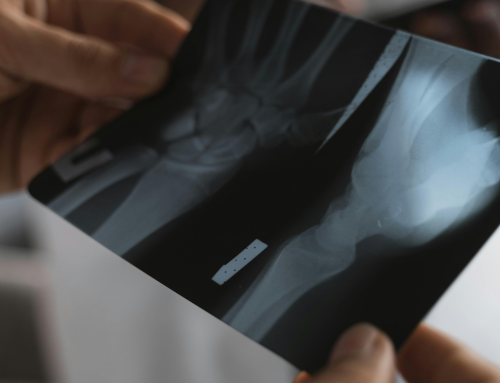Fractures can happen to anyone, regardless of age. While they’re more common as we get older, especially with osteoporosis, even a simple slip and fall can leave you wondering if you need an X-ray for your tender ankle. Parents might also worry when their child starts limping after a day at the playground. Is it just a sprain, or could it be something more serious?
When a fracture happens, getting the right medical care quickly is crucial to a good recovery. X-rays play an important role in diagnosing fractures, assessing their severity, and helping guide treatment. Knowing when to get an X-ray can make a big difference, preventing complications and ensuring the bone heals properly.

Why X-Rays Are Essential for Fracture Diagnosis
X-rays are the standard imaging tool used to diagnose fractures. They provide a clear image of the bone structure, allowing healthcare providers to see the location, type, and extent of the break. This information is critical in determining the appropriate treatment. This could mean weeks of immobilization with a cast, possible surgical intervention, or physical therapy.
Recognizing the Signs: When to Get an X-Ray
After an injury, it can be challenging to determine whether you need an X-ray or if the pain and swelling will subside on their own. However, specific symptoms and signs should not be ignored, as they may indicate a fracture that requires immediate medical attention. Here’s what you need to look out for:
Persistent Pain and Swelling
While pain and swelling are common after an injury, persistent or worsening symptoms could signal a fracture. If the pain doesn’t improve with rest, ice, and over-the-counter pain relievers, or if it worsens over time, an X-ray should be a top priority to rule out a fracture.
Deformity or Misalignment
If you can see a bone sticking out of your skin, that’s an obvious sign you need medical attention ASAP. However, not every fracture will break through the skin. Any visible deformity, such as a limb that appears out of place or a joint that looks misaligned, is a clear sign that a fracture may have occurred. This is particularly common in arms, legs, and collarbone fractures. In such cases, an X-ray is crucial to assess the severity of the injury.
Inability to Bear Weight or Use the Affected Area
If you are unable to bear weight on a leg or foot, or if you cannot use your arm or hand without significant pain, this may indicate a fracture. These symptoms suggest that the bone structure has been compromised, and an X-ray can help determine the exact nature of the injury. There’s no harm in getting an X-ray, to be sure. In the worst-case scenario, you might be told it’s just a sprain.
Numbness or Tingling
Numbness or tingling in the affected area can indicate nerve damage associated with a fracture. This is especially concerning if these symptoms persist or are accompanied by severe pain. An X-ray can assess the injury and prevent further complications.
The Role of X-Rays in Different Types of Fractures
Fractures vary widely in severity and treatment requirements, and X-rays play a crucial role in diagnosing each type. Let’s explore the different types of fractures and how they are diagnosed.
Hairline or Stress Fractures
Hairline fractures are small cracks in the bone that may not always be visible on initial X-rays. However, follow-up X-rays or other imaging techniques like MRI may be necessary to confirm the diagnosis if symptoms persist.
Compound Fractures
Compound fractures, where the bone pierces the skin, are serious injuries that require immediate medical attention. X-rays help assess the extent of the injury and plan surgical interventions to realign and stabilize the bone.
Complex Fractures
Complex fractures involve multiple breaks or splintering of the bone. These fractures often require detailed imaging to understand the full extent of the damage. X-rays provide the necessary information to guide surgical repairs and post-operative care.
Why Swift X-Ray Evaluation Is Critical
Delaying an X-ray can lead to complications, such as improper healing, chronic pain, and long-term disability. In severe cases, untreated fractures can result in malunion (where the bone heals in an incorrect position) or nonunion (where the bone fails to heal). Both conditions may require surgical intervention and extended rehabilitation.
Recognizing the signs that warrant an X-ray after an injury is essential for timely and effective fracture management. Persistent pain, deformity, inability to use the affected area, and symptoms like numbness or tingling should never be ignored. X-rays provide crucial insights into the nature of the injury, guiding appropriate treatment and maximizing recovery.
Additional treatment options like Low-Intensity Pulsed Ultrasound (LIPUS) can significantly enhance healing for those recovering from a fracture. The Melmak LIPUS device offers a non-invasive, 20-minute daily treatment that accelerates the healing process of fresh, delayed, and non-union fractures. With over 20 years of proven results, it provides a convenient solution for enhancing recovery at home, ensuring that you return to your daily activities as quickly and safely as possible. Contact Fracture Healing to learn more and determine if this treatment can help.
Have you ever had an X-ray? If so, what prompted you to get your injury looked at? Share your story with our readers in the comments below.





